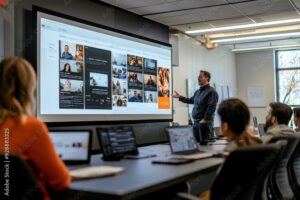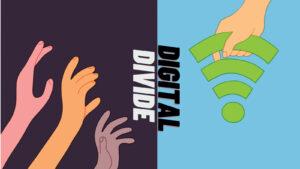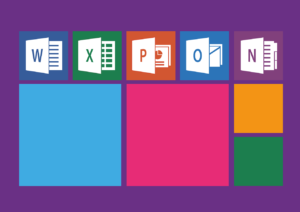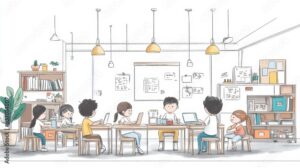
Productivity suites played a very crucial role in developing digital literacy and enhancing 21st-century skills among students by providing them with practical knowledge for the workforce. In my own experience working in diverse educational settings, particularly working with Piramal Foundation and Byju’s, I have seen how these tools help us in developing skills such as communication, collaboration, critical thinking, and creativity. Platforms such as docs, sheets and slides enabled my students to format documents, analyze data, and create presentations that are very necessary for today’s digital world. During my work on improving reading literacy among underserved communities, I have seen how introducing basic productivity tools helped my students in enhancing their knowledge and upgrading themselves with better skills.
Moreover, the cloud-based features of these suites helps in promoting teamwork, a skill that I have prioritized in my teaching. Reflecting on my previous work at Banyan Tree School, I encouraged students to use google slides presentations, helping them learn to work together on projects in real-time. While going through this blog by Anna McDonagh, he has mentioned the ability to collaborate digitally enhances interpersonal and project management skills, both critical for today’s workplace. The use of productivity tools has also helped my students to improve their communication skills by allowing them to present information in the class. Furthermore, providing students more opportunity to creatively design and integrate multimedia elements into their work will enhance their imagination power that will help them in future workforce.
These tools are widely used in various professional settings and giving students hands-on learning on these platforms will assist them in directly moving to the workforce. Their adaptability encourages lifelong learning, which I found useful as I moved through various roles in education, such as teaching, research, and mentoring. However, In my opinion there are still a lot of gaps that are still unaddressed. These tools are excellent for building basic digital literacy, but during my work with the Career Plus Program at Byju’s, Some students have faced numerous challenges to utilize these resources due to a lack of equipment, internet connection, or software licenses. Thus, creating a digital divide that prevents certain pupils from learning the full set of abilities that are required to succeed in modern professions.

Additionally, productivity suites do not always teach students how to follow digital ethics, privacy, or the critical evaluation of information, areas that are crucial for responsible digital citizenship. Another limitation is that online collaboration is easy where people can connect from remote areas but somehow they feel face to face communication to be more effective in understanding others skills such as emotional intelligence, conflict resolution, and leadership which I believe they are better developed through direct human interaction.
In conclusion, productivity suites are very important for fostering essential digital and professional skills that provide students with a solid foundation for future career success. My experience in both urban and rural education settings has shown that while these tools offer great value, we also need to address the gaps in advanced technical training, digital ethics, and equitable access remains critical to fully preparing students for the challenges of the 21st-century workforce.














